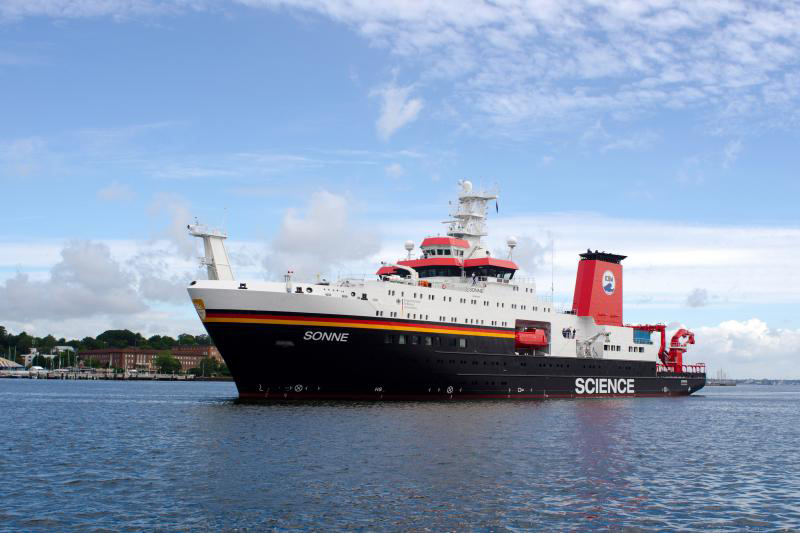SONNE SO237
- Area:
- Mid-Atlantic Ridge
- Time:
-
14.12.2014 - 26.01.2015
- Institution:
- GEOMAR
- Chief scientist:
- Colin W. Devey
The abyssal seafloor makes up more than 60 percent of our planet´s surface. Although it’s thus the largest habitat on earth, is has hardly been investigated. This applies even more to the deep-sea trenches below 6,000 meters water depth. Much about life on the sea floor and about how hydrosphere, biosphere and lithosphere interact with each other is unknown. During the first scientific expedition of the new German deep-sea research vessel SONNE (SO237, “Vema-TRANSIT”) scientists of GEOMAR, the Zoological Museum Hamburg and Cologne University, with the support of the German Centre for Marine Biodiversity Research at the Senckenberg Society want to investigate in more detail the biology and geology of the "Vema Fracture Zone" in the Atlantic. The "Vema Fracture Zone" is located at 10 ° N, and it is the biggest fracture along the Mid-Atlantic Ridge, which runs in a north-south direction through the entire ocean. The composition of the communities who live on the sea floor is investigated with deep-sea grabs and towed equipment, larger life forms are to be recorded photographically. For this among other devices GEOMAR’s autonomous underwater vehicle (AUV) ABYSS is used. It will also provide precise mapping of the study area. The scientists involved want to test the hypothesis whether the Mid-Atlantic Ridge serves as a barrier limiting benthic species distribution in the abyssal basins on both sides of the ridge..
A second working area of the expedition is the Puerto Rico Trench, which with more than 8000 meters depth belongs to the deepest regions of the Atlantic. The aim of the investigation is to determine whether the biodiversity in the deep sea trench differs from the surrounding shallower abyssal plains. The data obtained will also provide the basis for a planned large-scale research project on plate tectonics and deliver first complete high-resolution bathymetric data along a fracture zone.



